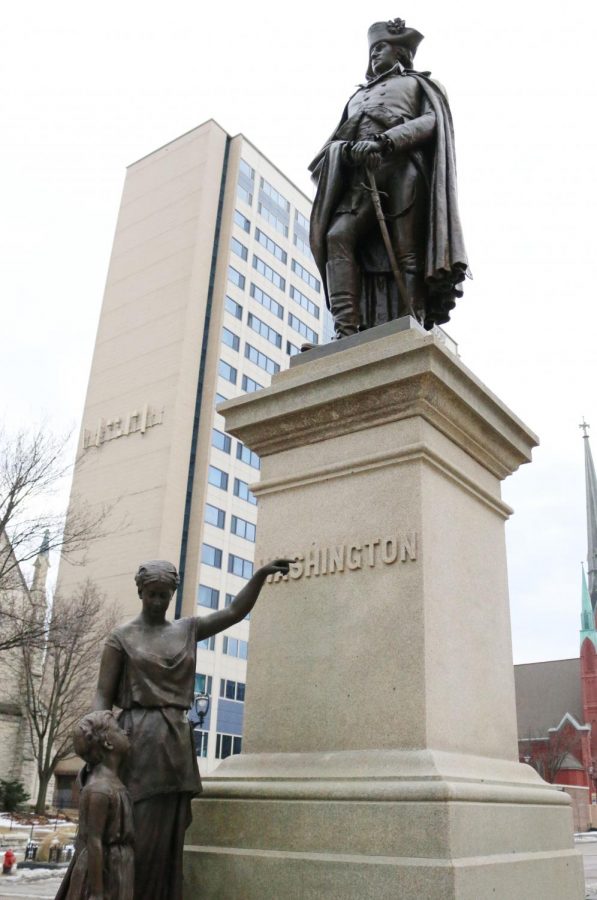Many students pass by it every day, but they may not notice the George Washington statue that stands tall at 9th Street and Wisconsin Avenue. In fact, they may not have realized it was missing from its pedestal for a year and a half as it underwent restoration treatments.
The monument was returned home Jan. 11, just as students were returning to campus. It was transported to Conservation of Sculpture and Objects Studio, Inc., a company dedicated to refurbishing aging monuments in Forest Park, Illinois. The project cost $100,000 to complete.
The Westown Association, headquartered in western downtown Milwaukee, began efforts to raise money for the statue’s face-lift due to the layers of black corrosion and splitting bronze on the 133-year-old monument. Claude Krawczyk, the organization’s president, said he was especially invested in getting it cleaned up.
“I can remember seeing it when I was a kid,” Krawczyk said. “It’s been there all my life. I think it’s an important memory for Milwaukee … an important symbol.”
Marquette contributed $2,500 to the project, among other locally-recognized donors, including Zilber Property Group and the Wisconsin Club. Bill Scholl, Marquette’s athletic director, is on the Westown board of directors.
The statue is Milwaukee’s oldest public monument and was made by Richard Henry Park. Elizabeth Plankinton, one of the most well-known local philanthropists of her day, presented it to the city in 1885.
Kristen Foster, an associate professor of history at Marquette specializing in early republic America, said the statue is an “ageless” depiction of Washington that demonstrates his importance in the unfolding of America’s early history.
“Most people don’t think of George Washington in connection with Milwaukee because the city grew in the 19th century,” Foster said. “But I suspect the monument’s donor, Elizabeth Plankinton, wanted viewers and visitors to connect the two, to see that Milwaukee was part of the great nation.”
The George Washington statue was originally slated to come back to Milwaukee in mid-2017, but Andrzej Dajnowski, founder and director of CSOS, said the project confronted many unforeseen challenges that extended the project another six months.
“The inside of the sculpture was filled with crushed brick,” Dajnowski said. “Because water got inside, the brick inside essentially became solid. It was very difficult to take out … especially from the legs. We had to cut an opening in the back. We took 1,300 pounds of the material from the inside of the sculpture.”
He explained that statues being filled with a material such as concrete and brick is “not normal” and actually counterintuitive.
“I’ve never seen anything like this in any other city I’ve worked in,” Dajnowski said. “There’s no need to fill such big monuments with anything … Normally you keep the sculptures hollow and clean on the inside. That’s the goal.”
Dajnowski said the woman and child who stand at ground level below George need to be maintained about once a year because they can be touched by passersby. That maintenance can be done on-site.
The Westown Association is still looking for $30,000 to begin restorations on the other two statues next to George. They are collectively known as the “Court of Honor.”
“People ignore all kinds of treasures until they’re almost lost,” Krawczyk said. “I think people take them for granted in some ways.”
Brian Dorrington, university spokesman, said the university is proud to have taken part in the restoration project.
“The project was a part of our efforts to be a good neighbor and support the nearby Westown neighborhood,” Dorrington said. “Given that the statute is prominently located on Wisconsin Avenue, it serves as an important landmark near Straz Tower on one of downtown’s most well-traveled streets.”


